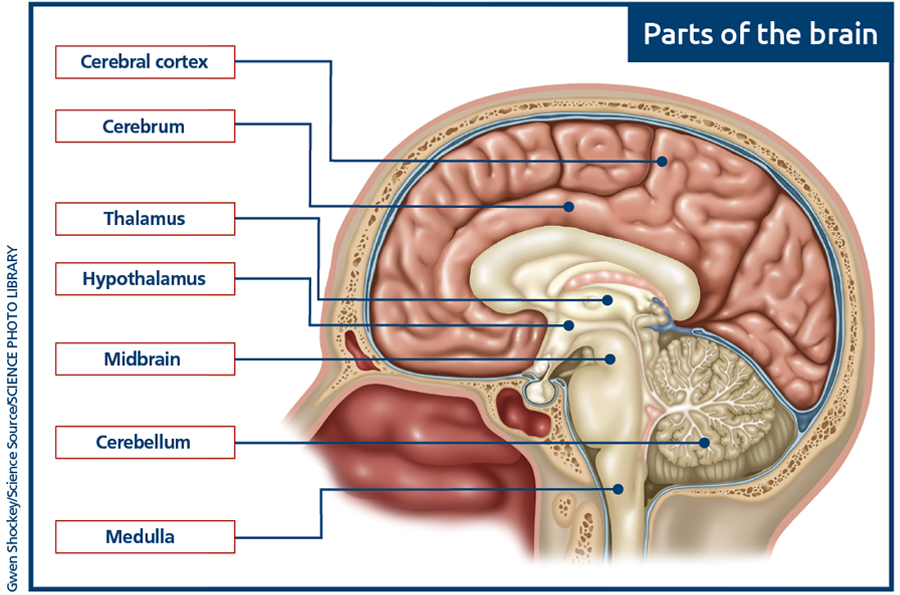
The brain is subdivided into many areas where neurons with specific functions are clustered.
Medulla
Part of the brainstem, the medulla unconsciously controls many basic body functions such as breathing and circulation, as well as some reflexes such as swallowing and sneezing. It is also the part of the brainstem that connects the brain to the spinal cord.
Reticular formation
Extending through the central core of the brainstem, the reticular formation helps maintain balance during movement, filters perception in order to prioritise sensory stimulation, and has a role in the transition between waking and sleeping.
Substantia nigra
Forming part of the midbrain, and also located in the brainstem, the substantia nigra produces the neurotransmitter dopamine, which has many important roles including helping to smooth out body movements so they are not jerky.
Cerebellum
Unconsciously dealing with hearing, vision, balance, memory, learning and movement, the cerebellum is located at the back of the brain, just behind the brainstem.
Thalamus
Sitting just above the brainstem and buried deep inside the brain is the thalamus. It deals with all sensory information other than smell, directing the signals to the relevant areas to be processed – much like a switchboard – and also has a role in managing sleep and alertness.
Hypothalamus
Maintaining the body’s internal environment by regulating hunger, thirst, body temperature, sleep etc., the hypothalamus is sometimes regarded as the body’s control centre. It also deals with emotions and releasing certain hormones.
Cerebrum
Looking after voluntary body movements, the cerebrum is the largest part of the brain. There are two sides, known as hemispheres, each of which controls the opposite side of the body, i.e. the left hemisphere dictates what the right hand side of the body does.
Cerebral cortex
Surrounding the cerebrum, the cerebral cortex is responsible for intelligence, creativity and memory. It has a large surface area but is folded many times in order to contain it within the skull. It is divided into four lobes: the frontal lobe, which deals with speech and thought processes, the parietal lobe which interprets sensory information; the temporal lobe, which has an important role in recognising and understanding auditory and visual information; and the occipital lobe, which processes the signal sent from the eyes and is also from where dreams originate.
Cranial nerves
The brain has 12 pairs of nerves connecting it to different parts of the upper body, each named for their function or structure. The cranial nerves are also sometimes referred to by a Roman numeral, based on their location from the front to the back of the head, e.g. cranial nerve I (olfactory), which processes information about smells, is closest to the front of the head.
